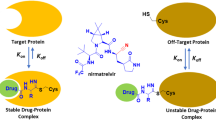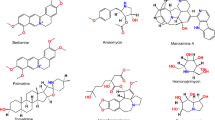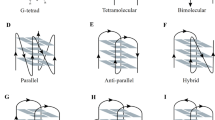Abstract
Stimulator of interferon genes (STING), which is an integral ER-membrane protein, could induce an antiviral state and boost antitumor immunity. Recent experiments reported that different small molecules could modulate the conformation of the STING. However, the mechanism of small molecules modulating the conformation of STING is still unknown. To illustrate the conformational modulated mechanism of STING by small molecules at atomic level, we investigated the interactions between STING and the small molecules: cGAMP and diABZI with molecular dynamics (MD) simulations method. Interestingly, we found that the residues of STING in the binding pocket are more flexible in the monomers of STING than that in the dimer of STING. We also demonstrated that cGAMP and diABZI have a similar binding mode to STING monomers/dimer, and π–π stacking interactions play important roles for the agonists and STING. Our study proposed mechanistic insights into the STING conformation modulated by small molecules and we suggested that the special molecule (e. g. diABZI) could induce the conformational transition of STING from the “open” monomers to the “closed” dimer state. Our research may provide a clue for the development of cancer immunotherapy.
Graphic abstract







Similar content being viewed by others
References
Ramanjulu JM et al (2018) Design of amidobenzimidazole STING receptor agonists with systemic activity. Nature 564:439–443. https://doi.org/10.1038/s41586-018-0705-y
Zhong S et al (2019) Computational study on new natural compound agonists of stimulator of interferon genes (STING). PLoS ONE 14:e0216678. https://doi.org/10.1371/journal.pone.0216678
Deng L et al (2014) STING-dependent cytosolic DNA sensing promotes radiation-induced type I interferon-dependent antitumor immunity in immunogenic tumors. Immunity 41:843–852. https://doi.org/10.1016/j.immuni.2014.10.019
Sen T et al (2019) Targeting DNA damage response promotes antitumor immunity through STING-mediated T-cell activation in small cell lung cancer. Cancer Discov 9:646–661. https://doi.org/10.1158/2159-8290.CD-18-1020
Demaria O et al (2015) STING activation of tumor endothelial cells initiates spontaneous and therapeutic antitumor immunity. Procd Natl Acad Sci 112:15408–15413. https://doi.org/10.1073/pnas.1512832112
Sali TM et al (2015) Characterization of a novel human-specific STING agonist that elicits antiviral activity against emerging alphaviruses. PLoS Pathog 11:e1005324. https://doi.org/10.1371/journal.ppat.1005324
Ding L et al (2018) PARP inhibition elicits STING-Dependent antitumor immunity in brca1-deficient ovarian cancer. Cell Rep 25:2972-2980.e5. https://doi.org/10.1016/j.celrep.2018.11.054
Berger G, Marloye M, Lawler SE (2019) Pharmacological modulation of the STING pathway for cancer immunotherapy. Trends Mol Med 25:412–427. https://doi.org/10.1016/j.molmed.2019.02.007
Ghaffari A et al (2018) STING agonist therapy in combination with PD-1 immune checkpoint blockade enhances response to carboplatin chemotherapy in high-grade serous ovarian cancer. Br J Cancer 119:440–449. https://doi.org/10.1038/s41416-018-0188-5
Li T, Chen ZJ (2018) The cGAS–cGAMP–STING pathway connects DNA damage to inflammation, senescence, and cancer. J Exp Med 215:1287–1299. https://doi.org/10.1084/jem.20180139
Dobbs N et al (2015) STING activation by translocation from the ER is associated with infection and autoinflammatory disease. Cell Host Microbe 18:157–168. https://doi.org/10.1016/j.chom.2015.07.001
Ahn J, Gutman D, Saijo S, Barber GN (2012) STING manifests self DNA-dependent inflammatory disease. Procd Natl Acad Sci 109:19386–19391. https://doi.org/10.1073/pnas.1215006109
Jeremiah N et al (2014) Inherited STING-activating mutation underlies a familial inflammatory syndrome with lupus-like manifestations. J Clin Invest 124:5516–5520. https://doi.org/10.1172/jci79100
Carroll EC et al (2016) The vaccine adjuvant chitosan promotes cellular immunity via DNA sensor cGAS-STING-dependent induction of type I interferons. Immunity 44:597–608. https://doi.org/10.1016/j.immuni.2016.02.004
Hanson MC et al (2015) Nanoparticulate STING agonists are potent lymph node–targeted vaccine adjuvants. J Clin Invest 125:2532–2546. https://doi.org/10.1172/JCI79915
Woo S-R et al (2014) STING-dependent cytosolic DNA sensing mediates innate immune recognition of immunogenic tumors. Immunity 41:830–842. https://doi.org/10.1016/j.immuni.2014.10.017
Wang Z, Celis E (2015) STING activator c-di-GMP enhances the anti-tumor effects of peptide vaccines in melanoma-bearing mice. Cancer Immunol Immunother 64:1057–1066. https://doi.org/10.1007/s00262-015-1713-5
Shu C, Yi G, Watts T, Kao CC, Li P (2012) Structure of STING bound to cyclic di-GMP reveals the mechanism of cyclic dinucleotide recognition by the immune system. Nat Struct Mol Biol 19:722–724. https://doi.org/10.1038/nsmb.2331
Ablasser A et al (2013) Cell intrinsic immunity spreads to bystander cells via the intercellular transfer of cGAMP. Nature 503:530–534. https://doi.org/10.1038/nature12640
Carozza JA et al (2020) Extracellular cGAMP is a cancer-cell-produced immunotransmitter involved in radiation-induced anticancer immunity. Nat Cancer 1:184–196. https://doi.org/10.1038/s43018-020-0028-4
Bridgeman A et al (2015) Viruses transfer the antiviral second messenger cGAMP between cells. Science 349:1228–1232. https://doi.org/10.1126/science.aab3632
Bai J, Liu F (2019) The cGAS-cGAMP-STING pathway: a molecular link between immunity and metabolism. Diabetes 68:1099–1108. https://doi.org/10.2337/dbi18-0052
Marcus A et al (2018) Tumor-derived cGAMP triggers a STING-mediated interferon response in non-tumor cells to activate the NK cell response. Immunity 49:754-763.e4. https://doi.org/10.1016/j.immuni.2018.09.016
Cai X, Chiu Y-H, Chen ZJ (2014) The cGAS-cGAMP-STING Pathway of cytosolic DNA sensing and signaling. Mol Cell 54:289–296. https://doi.org/10.1016/j.molcel.2014.03.040
Li A et al (2019) Activating cGAS-STING pathway for the optimal effect of cancer immunotherapy. J Hematol Oncol 12:35–35. https://doi.org/10.1186/s13045-019-0721-x
Gao P et al (2014) Binding-pocket and lid-region substitutions render human STING sensitive to the species-specific drug DMXAA. Cell Rep 8:1668–1676. https://doi.org/10.1016/j.celrep.2014.08.010
Ergun SL, Li L (2020) Structural Insights into STING signaling. Trends Cell Biol 30:399–407. https://doi.org/10.1016/j.tcb.2020.01.010
Li J, Wei D-Q, Wang J-F, Li Y-X (2011) A negative cooperativity mechanism of human CYP2E1 inferred from molecular dynamics simulations and free energy calculations. J Chem Inf Model 51:3217–3225. https://doi.org/10.1021/ci2004016
Gu R-X, Liu LA, Wang Y-H, Xu Q, Wei D-Q (2013) Structural comparison of the wild-type and drug-resistant mutants of the influenza A M2 proton channel by molecular dynamics simulations. J Phys Chem B 117:6042–6051. https://doi.org/10.1021/jp312396q
Bai C et al (2019) Influence of fullerenol on hIAPP aggregation: amyloid inhibition and mechanistic aspects. Phys Chem Chem Phys 21:4022–4031. https://doi.org/10.1039/C8CP07501H
Jin Y, Sun Y, Lei J, Wei G (2018) Dihydrochalcone molecules destabilize Alzheimer’s amyloid-β protofibrils through binding to the protofibril cavity. Phys Chem Chem Phys 20:17208–17217. https://doi.org/10.1039/C8CP01631C
Zhang X et al (2013) Cyclic GMP-AMP containing mixed phosphodiester linkages is an endogenous high-affinity ligand for STING. Mol Cell 51:226–235. https://doi.org/10.1016/j.molcel.2013.05.022
Kopp J, Schwede T (2006) The SWISS-MODEL repository: new features and functionalities. Nucleic Acids Res 34:D315–D318. https://doi.org/10.1093/nar/gkj056
Bienert S et al (2017) The SWISS-MODEL repository - new features and functionality. Nucleic Acids Res 45:D313–D319. https://doi.org/10.1093/nar/gkw1132
Bertoni M, Kiefer F, Biasini M, Bordoli L, Schwede T (2017) Modeling protein quaternary structure of homo- and hetero-oligomers beyond binary interactions by homology. Sci Rep 7:10480–10480. https://doi.org/10.1038/s41598-017-09654-8
Shao Y et al (2006) Advances in methods and algorithms in a modern quantum chemistry program package. Phys Chem Chem Phys 8:3172–3191. https://doi.org/10.1039/B517914A
Schüttelkopf AW, van Aalten DMF (2004) PRODRG: a tool for high-throughput crystallography of protein-ligand complexes. Acta crystallographica Sect D Biol Crystallogr 60:1355–1363. https://doi.org/10.1107/s0907444904011679
Case DA et al (2005) The amber biomolecular simulation programs. J Comput Chem 26:1668–1688. https://doi.org/10.1002/jcc.20290
Hornak V et al (2006) Comparison of multiple Amber force fields and development of improved protein backbone parameters. Proteins Struct Funct Bioinform 65:712–725. https://doi.org/10.1002/prot.21123
Hess B, Kutzner C, van der Spoel D, Lindahl Er (2008) GROMACS 4: algorithms for highly efficient, load-balanced, and scalable molecular simulation. J Chem Theory Comput 4:435–447. https://doi.org/10.1021/ct700301q
Lindorff-Larsen K et al (2010) Improved side-chain torsion potentials for the Amber ff99SB protein force field. Proteins Struct Funct Bioinform 78:1950–1958. https://doi.org/10.1002/prot.22711
Guan X, Lin P, Knoll E, Chakrabarti R (2014) Mechanism of inhibition of the human sirtuin enzyme SIRT3 by nicotinamide: computational and experimental studies. PLoS ONE 9:e107729–e107729. https://doi.org/10.1371/journal.pone.0107729
Karaman B, Sippl W (2015) Docking and binding free energy calculations of sirtuin inhibitors. Eur J Med Chem 93:584–598. https://doi.org/10.1016/j.ejmech.2015.02.045
Sun Y, Qian Z, Wei G (2016) The inhibitory mechanism of a fullerene derivative against amyloid-β peptide aggregation: an atomistic simulation study. Phys Chem Chem Phys 18:12582–12591. https://doi.org/10.1039/C6CP01014H
Pitera JW (2014) Expected distributions of root-mean-square positional deviations in proteins. J Phys Chem B 118:6526–6530. https://doi.org/10.1021/jp412776d
Xu Yu, Zheng QC, Yu LY, Zhang HX, Sun CC (2013) A molecular dynamics and computational study of human KAT3 involved in KYN pathway. Sci China Chem 56:514–523. https://doi.org/10.1007/s11426-012-4802-8
Mo Y et al (2018) The inhibitory effect of hydroxylated carbon nanotubes on the aggregation of human islet amyloid polypeptide revealed by a combined computational and experimental study. ACS Chem Neurosci 9:2741–2752. https://doi.org/10.1021/acschemneuro.8b00166
Zhan C, Chen Y, Tang Y, Wei G (2020) Green tea extracts EGCG and EGC display distinct mechanisms in disrupting Aβ42 protofibril. ACS Chem Neurosci 11:1841–1851. https://doi.org/10.1021/acschemneuro.0c00277
Lao Z, Chen Y, Tang Y, Wei G (2019) Molecular dynamics simulations reveal the inhibitory mechanism of dopamine against human islet amyloid polypeptide (hIAPP) aggregation and its destabilization effect on hIAPP protofibrils. ACS Chem Neurosci 10:4151–4159. https://doi.org/10.1021/acschemneuro.9b00393
Onufriev A, Bashford D, Case DA (2004) Exploring protein native states and large-scale conformational changes with a modified generalized born model. Proteins Struct Funct Bioinform 55:383–394. https://doi.org/10.1002/prot.20033
Salomon-Ferrer R, Case DA, Walker RC (2013) An overview of the Amber biomolecular simulation package. WIREs Comput Mol Sci 3:198–210. https://doi.org/10.1002/wcms.1121
Kumari R, Kumar R, Lynn A (2014) g_mmpbsa—a GROMACS tool for high-throughput MM-PBSA calculations. J Chem Inf Model 54:1951–1962. https://doi.org/10.1021/ci500020m
Berhanu WM, Hansmann UHE (2013) The stability of cylindrin β-barrel amyloid oligomer models-a molecular dynamics study. Proteins 81:1542–1555. https://doi.org/10.1002/prot.24302
Zhang T, Zhang J, Derreumaux P, Mu Y (2013) Molecular mechanism of the inhibition of EGCG on the alzheimer Aβ1–42 dimer. J Phys Chem B 117:3993–4002. https://doi.org/10.1021/jp312573y
Song M et al (2018) Exploring the mechanism of inhibition of Au nanoparticles on the aggregation of amyloid-β(16–22) peptides at the atom level by all-atom molecular dynamics. Int J Mol Sci 19:1815–1815. https://doi.org/10.3390/ijms19061815
Ouyang S et al (2012) Structural analysis of the STING adaptor protein reveals a hydrophobic dimer interface and mode of cyclic di-GMP binding. Immunity 36:1073–1086. https://doi.org/10.1016/j.immuni.2012.03.019
Tsuchiya Y, Jounai N, Takeshita F, Ishii KJ, Mizuguchi K (2016) Ligand-induced ordering of the C-terminal tail primes STING for phosphorylation by TBK1. EBioMedicine 9:87–96. https://doi.org/10.1016/j.ebiom.2016.05.039
Shang G et al (2012) Crystal structures of STING protein reveal basis for recognition of cyclic di-GMP. Nat Struct Mol Biol 19:725–727. https://doi.org/10.1038/nsmb.2332
Gao P et al (2013) Structure-function analysis of STING activation by c[G(2′,5′)pA(3′,5′)p] and targeting by antiviral DMXAA. Cell 154:748–762. https://doi.org/10.1016/j.cell.2013.07.023
Bianchi V, Gherardini PF, Helmer-Citterich M, Ausiello G (2012) Identification of binding pockets in protein structures using a knowledge-based potential derived from local structural similarities. BMC Bioinform 13:S17–S17. https://doi.org/10.1186/1471-2105-13-S4-S17
Stank A, Kokh DB, Fuller JC, Wade RC (2016) Protein binding pocket dynamics. Acc Chem Res 49:809–815. https://doi.org/10.1021/acs.accounts.5b00516
Malisi C et al (2012) Binding pocket optimization by computational protein design. PLoS ONE 7:e52505–e52505. https://doi.org/10.1371/journal.pone.0052505
Sintim HO, Mikek CG, Wang M, Sooreshjani MA (2019) Interrupting cyclic dinucleotide-cGAS–STING axis with small molecules. MedChemComm 10:1999–2023. https://doi.org/10.1039/C8MD00555A
Cavlar T, Deimling T, Ablasser A, Hopfner K-P, Hornung V (2013) Species-specific detection of the antiviral small-molecule compound CMA by STING. EMBO J 32:1440–1450. https://doi.org/10.1038/emboj.2013.86
Zevini A, Olagnier D, Hiscott J (2017) Crosstalk between cytoplasmic RIG-I and STING sensing pathways. Trends Immunol 38:194–205. https://doi.org/10.1016/j.it.2016.12.004
Koch PD et al (2018) A high content screen in macrophages identifies small molecule modulators of STING-IRF3 and NFkB signaling. ACS Chem Biol 13:1066–1081. https://doi.org/10.1021/acschembio.7b01060
Song M, Zhu Y, Wei G, Li H (2017) Carbon nanotube prevents the secondary structure formation of amyloid-β trimers: an all-atom molecular dynamics study. Mol Simul 43:1189–1195. https://doi.org/10.1080/08927022.2017.1321757
Xinwei G, Yunxiang S, Feng D (2018) Structures and dynamics of β-barrel oligomer intermediates of amyloid-beta16–22 aggregation. Biochimica et Biophysica Acta (BBA) – Biomembranes 1860:1687–1697. https://doi.org/10.1016/j.bbamem.2018.03.011
Sun Y, Ding F (2020) Thermo- and pH-responsive fibrillization of squid suckerin A1H1 peptide. Nanoscale 12:6307–6317. https://doi.org/10.1039/C9NR09271D
Zhao S et al (2020) Structural insight into the interactions between structurally similar inhibitors and SIRT6. Int J Mol Sci 21:2601–2601. https://doi.org/10.3390/ijms21072601
Wang X et al (2020) Molecular dynamics simulations reveal the mechanism of the interactions between the inhibitors and SIRT2 at atom level. Mol Simul 46:638–649. https://doi.org/10.1080/08927022.2020.1757093
Acknowledgements
Qingjie Zhao thanks the supporting from the "Personalized Medicines–Molecular Signature–based Drug Discovery and Development".
Author information
Authors and Affiliations
Contributions
LC, HL and QZ conceived and designed the research. LC performed the simulations. LC, SZ, YZ and YL analysed the simulation data. LC and HL wrote the paper. The article was approved by all authors.
Corresponding authors
Ethics declarations
Conflict of Interest
The authors declare no competing financial interest.
Supplementary Information
Below is the link to the electronic supplementary material.
Rights and permissions
About this article
Cite this article
Chen, L., Zhao, S., Zhu, Y. et al. Molecular Dynamics Simulations Reveal the Modulated Mechanism of STING Conformation. Interdiscip Sci Comput Life Sci 13, 751–765 (2021). https://doi.org/10.1007/s12539-021-00446-3
Received:
Revised:
Accepted:
Published:
Issue Date:
DOI: https://doi.org/10.1007/s12539-021-00446-3




